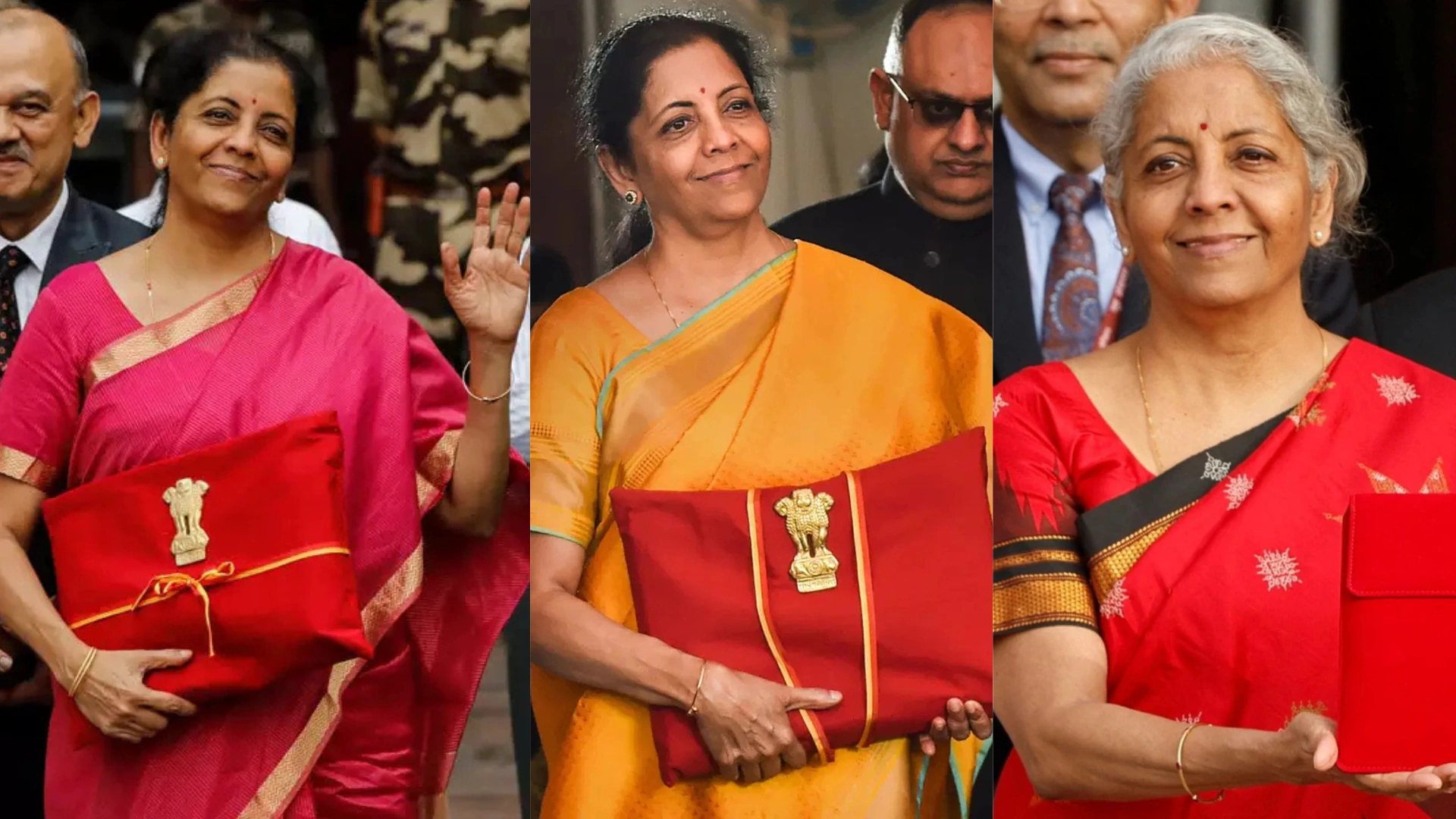As India awaits the Union Budget 2025, all eyes will be on Finance Minister Nirmala Sitharaman—both for the economic policies that she will come up with and for her sarees, very carefully chosen as always. From the time Sitharaman took over as the Finance Minister of India in 2019, the nation was not only gripped by the vision she carried for India’s economic growth but also by her symbolic choice of sarees at her annual budget presentations.
Every year, her saree is more than just a mere piece of attire; it embodies the rich culture of India and the support that is given to local craftsmanship. So, let’s look at some of the important sarees of hers.
2025: Madhubani Saree
2024-25: Andhra Pradesh’s Heritage
This budget of 2024-25 Sitharaman selected an ornate off-white Mangalagiri saree with a fabulous magenta border. Mangalagiri originates from the district of Guntur in the state of Andhra Pradesh; it is widely appreciated for simple, clean borders without too much fancy craftsmanship. And she did give the special support for Andhra Pradesh in financial terms to meet the actual need of support through the very crucial irrigation development for the agrarian economy-the Polavaram irrigation project in this budget. The off-white silk and bold magenta border were an apt reflection of the vibrancy of the state along with the hope and aspirations and made this saree a complete blend of tradition and policy.
2024 Interim Budget: Kantha Saree
Before 2024 for the interim budget, Sitharaman donned a blue-colored saree decorated with intricate embroidery of Kantha from West Bengal. Kantha stitch, known for its motifs of nature like leaves and flowers, was a beautiful representation of Bengali craftsmanship. This particular choice highlighted not only the region’s rich textile tradition but also the government’s focus on boosting aquaculture and the fisheries sector, which were given record funds in the budget. Highlighting the Kantha stitch, Sitharaman honored a heritage craft while bringing focus to the need for sustaining regional industries.
2023: Red Silk
Sitharaman sported a gorgeous deep red silk saree with a black-and-gold temple border in 2023. The chariots, peacocks, and lotus motifs are quintessential to South Indian textiles and signify heritage, strength, and stability. The red color is associated with power, vitality, and auspiciousness. The powerful presence of the Finance Minister was well represented as she laid out India’s economic roadmap for the future. This saree choice reflected the gravity of the budget and the government’s emphasis on stability and growth.
2022: Bomkai Saree
For the Budget 2022, Sitharaman went with a brown Bomkai saree from Odisha, that showed intricate zari work and delicate motifs that narrated stories from nature and mythology. This saree was a tribute to Odisha’s handloom industry and its cultural richness. By choosing a Bomkai saree, Sitharaman highlighted the state’s contribution to India’s textile legacy while paying her commitment to promoting regional handlooms and crafts. This was in consonance with the state’s initiative of supporting artisans and conserving the traditional arts in the state.
2021: Telangana’s Pochampally Ikat Weaves
Sitharaman wore a bright Pochampally Ikat saree in 2021, a traditional handwoven piece from Telangana. The striking combination of red, off-white, and green mirrored the country’s dynamic economic revival post-pandemic. Pochampally Ikat is known for its rich patterns and vibrant colors, making it the perfect symbol of renewal and growth. The saree was an elegant sartorial reflection of the government’s emphasis on revitalizing the economy and supporting local artisans.
2020: Bold Yellow Saree
The 2020 Budget was presented when India was trying to come to terms with the economic impact of the global pandemic. Sitharaman opted for a bold yellow silk saree with a blue border, which are colors deeply symbolic in Indian culture. Yellow is a color of prosperity, positivity, and new beginnings, while blue symbolizes stability and calm. This saree she wore was a message of hope and resilience, signaling a bright future for the economy despite the challenges posed by the pandemic.
2019: Pink Mangalagiri
Sitharaman’s debut budget in 2019 was historic for many reasons, not just for the policies she announced but also for her sartorial choices. She broke the convention by wearing a bright pink Mangalagiri saree with a golden border. This marked a newness in her attitude towards the role and was far removed from the conservative approach that had been there for years. In so doing, it paid homage to India’s great textile heritage as well as opting for carrying Budget documents in the “bahi khata”, a traditional ledger, instead of the colonial-era briefcase; she underscored her commitment towards reviving practices indigenous to this land.
Sitharaman is a statement on India’s diversity and culture every time she comes out wearing a saree on Budget Day. Handwoven sarees are beautiful, carrying deep pockets of region-wide connection and subtle messages about the kind of government. Through her choices, Sitharaman loudly speaks about the importance of the rich handloom traditions in this country, supports local artisans, and promotes sustainable practices in fashion.
ALSO READ: Budget 2025: FM Nirmala Sitharaman Adorns Odisha’s Pattachitra Saree





